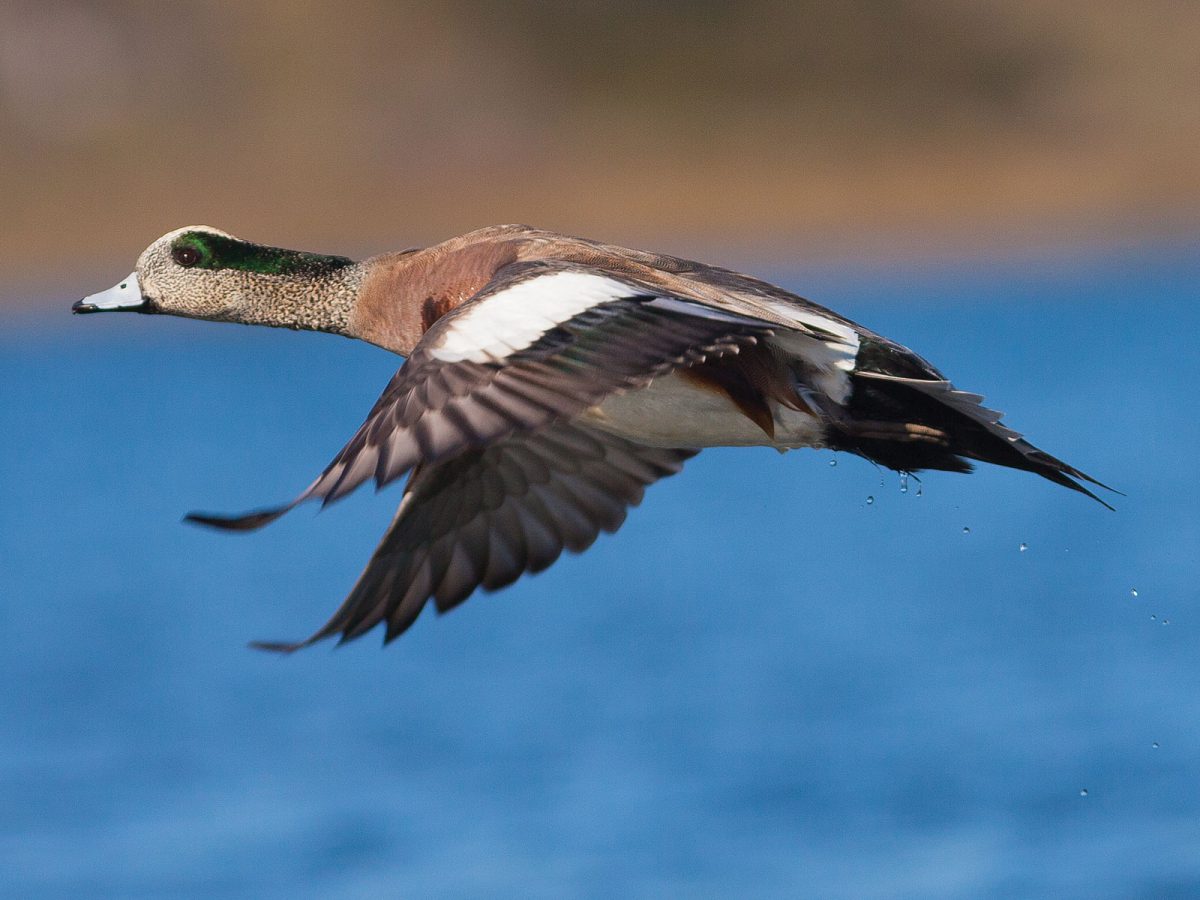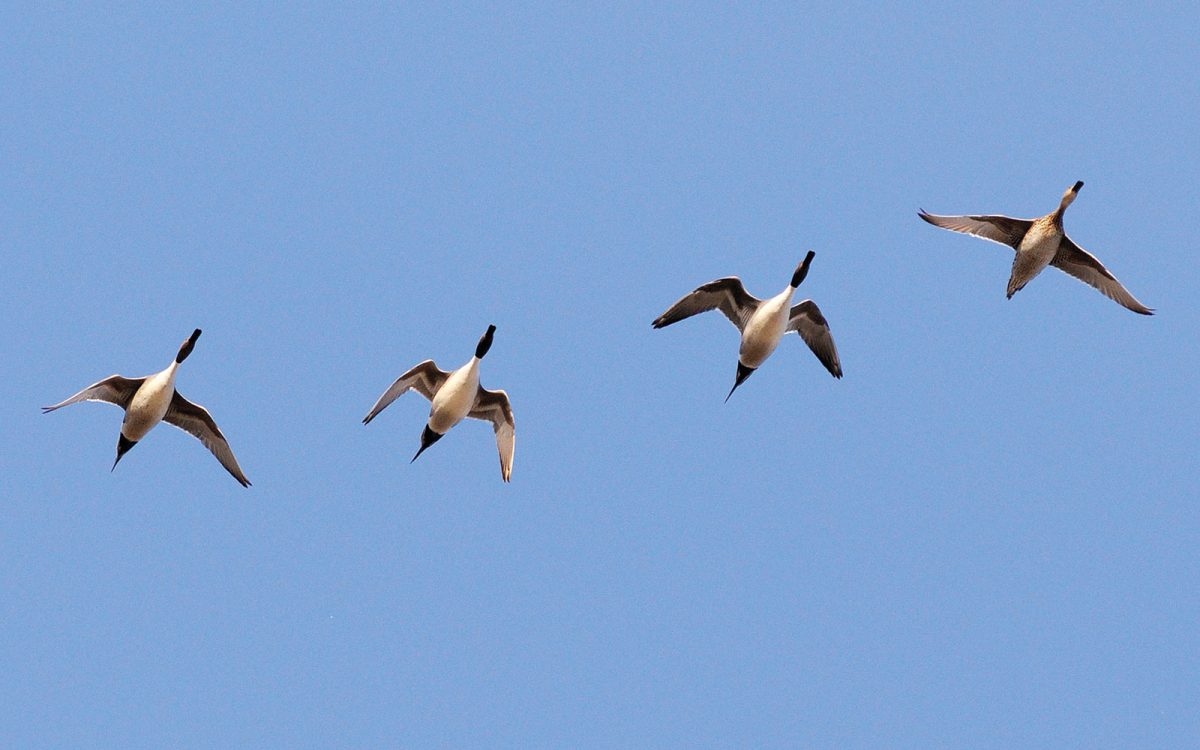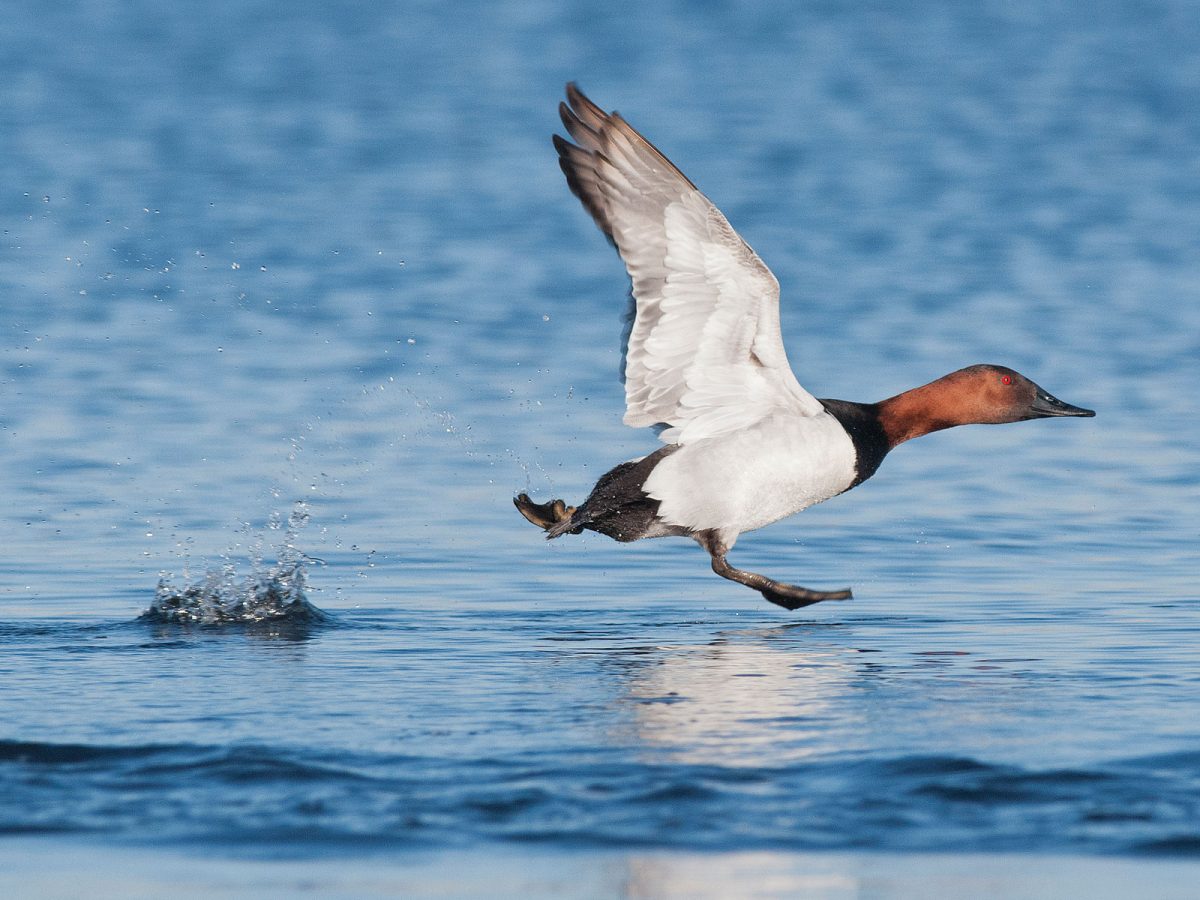Ducks from a distance: helpful hints for identification in the wild

If it looks like a duck, walks like a duck and quacks like a duck—well, you know the rest. But with more than 20 different species in North America, distinguishing one duck from another can be tricky. Add in other waterfowl like geese and swans, water birds like loons and coots, and you’ve got a dizzying collection of wild wings to decipher. We asked three seasoned waterfowl experts how they overcome some of their duck ID challenges, and to share a few tried-and-true tips.
Poor light? Look for the white!
Jim Couch is DUC’s chairman of the board and a lifelong waterfowler. His homegrown hack helps hunters and birders during dimly lit morning and evening hours or on cloudy days when visibility is reduced.
“At 66 years old, my eyesight isn’t what it used to be,” says Couch. “This has pushed me to look for the most highly visible colour in poor light conditions, which is white.”
Couch says most of the ducks he hunts have fairly dominant white markings, demonstrated in males.
Mallard: While many people recognize a mallard drake by his striking green head, in poor light this is challenging to see. The white ring around his neck, and bright white tail edged in black, may be easier to spot.
Blue-winged teal: This small, speedy drake has a white crescent in front of his eyes.
American wigeon: Male American wigeons have a white patch that runs from the forehead to the middle of the crown. In flight, its white shoulder patch is a distinctive characteristic.

©DUC
In flight insights
Waterfowl can come in fast. They can dip, dart, circle and generally make identification tough while in motion. Couch shares a few insights to help spot familiar species on the fly.
Mallard: The mallard doesn’t do much dipsy-doodling in the air. Instead, it loses altitude quickly by dropping straight down. When a mallard comes in to land, it lifts its head, cups its wings and torpedoes in.
Northern pintail: Couch calls them the “F-18s of ducks.” Not only graceful in the air, they’re also extremely fast.
Blue-winged and green-winged teal: These small ducks often do a tight corkscrew circle before landing on the water. Their flight can be erratic, with the entire flock twisting and turning as one unit.

©DUC
Watch the water
Chris Benson is an avid photographer, waterfowl enthusiast and DUC’s waterfowling heritage co-ordinator. He’s spent more hours than you can count on the water where he’s become familiar with the distinctive splishing and splashing of various species.
“Simply watching how a duck moves on the water can determine if it’s a diver or a dabbler,” says Benson. “This is an important first step in narrowing your search.”
Here are a few clues from Benson.
Profiles: Divers like scaup, eiders and scoters generally sit lower in the water; the back of their bodies tend to slope down with their tails in the water or just above it. Dabbling ducks like wood ducks, black ducks and wigeons sit higher with their tails out of the water.
Take-offs: Diving ducks have small wings relative to their body size, which requires that they take a running start to gain enough speed to take off from the water. Dabblers spring straight up off the water.
Hangouts: Habitat is a key piece of identification. Dabbling ducks are most often found in shallow water around the edges of wetlands. Divers prefer deeper water like in the middle of large wetlands or on lakes and rivers.


©DUC
Bills can give you the scoop
Bills are to waterfowl what utensils are to people. They come in different shapes and sizes to accommodate food we eat. Benson says some waterfowl have specialized bills that look different than what most of us might imagine.
Wedge-shaped: Canvasbacks have a long sloped wedge-shaped bill that helps them dig up aquatic plant roots.
Spoon-shaped: The shoveler is notorious for its broad, flat spoon-shaped bill that helps it skim invertebrates from the water.
Serrated: Mergansers have long, narrow bills with tooth-like edges that grab and immobilize its prey, such as small fish.
Learn the name last. It’s not as important as you think.
Richard Crossley is an internationally acclaimed birder and award-winning author of The Crossley ID Guide series. His newest publication covers all waterfowl, ducks, geese and swans in North America. Crossley’s best advice is to forget about learning species’ names. He encourages people to first focus on getting familiar with characteristics like size, shape and behaviour.
“We always seem to get fixated on the answer. It’s really not about the answer, it’s about a discovery. So if we try to work out the name all the time and we can’t do it, we feel like a failure and we stop doing it. The key is always to say, ‘That’s the same thing I saw last week. It’s small. It’s chunky. It keeps bobbing its head up and down.’ If you actually learn the birds, the name always comes later. Just keep looking.”
Fall is a perfect time to flex your waterfowl identification muscles. All of our experts agree that no tips or tricks can outweigh experience. Enjoy the season and discovering more about ducks from a distance.



